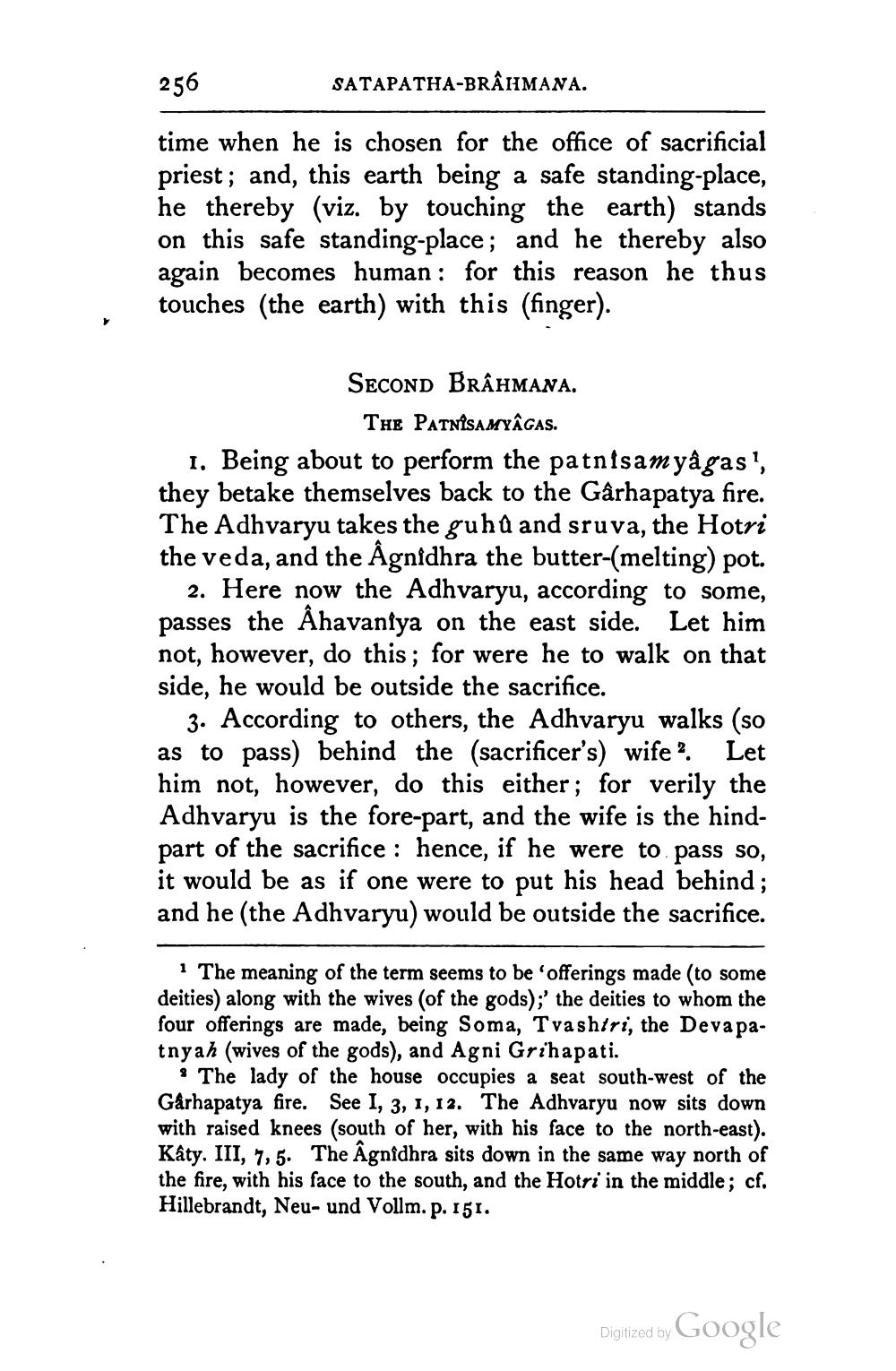________________
256
SATAPATHA-BRAHMANA.
time when he is chosen for the office of sacrificial priest; and, this earth being a safe standing-place, he thereby (viz. by touching the earth) stands on this safe standing-place; and he thereby also again becomes human: for this reason he thus touches (the earth) with this (finger).
SECOND BRAHMANA.
THE PATNISAMYAGAS.
1. Being about to perform the patnisamyâgas1, they betake themselves back to the Gârhapatya fire. The Adhvaryu takes the guhû and sruva, the Hotri the veda, and the Âgnidhra the butter-(melting) pot.
2. Here now the Adhvaryu, according to some, passes the Âhavantya on the east side. Let him
not, however, do this; for were he to walk on that side, he would be outside the sacrifice.
3. According to others, the Adhvaryu walks (so as to pass) behind the (sacrificer's) wife 2. Let him not, however, do this either; for verily the Adhvaryu is the fore-part, and the wife is the hindpart of the sacrifice: hence, if he were to pass so, it would be as if one were to put his head behind; and he (the Adhvaryu) would be outside the sacrifice.
1 The meaning of the term seems to be 'offerings made (to some deities) along with the wives (of the gods);' the deities to whom the four offerings are made, being Soma, Tvashiri, the Devapatnyah (wives of the gods), and Agni Grihapati.
The lady of the house occupies a seat south-west of the Gârhapatya fire. See I, 3, 1, 12. The Adhvaryu now sits down with raised knees (south of her, with his face to the north-east). Kâty. III, 7, 5. The Âgnîdhra sits down in the same way north of the fire, with his face to the south, and the Hotri in the middle; cf. Hillebrandt, Neu- und Vollm. p. 151.
Digitized by Google




